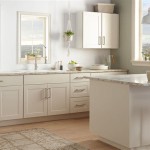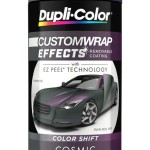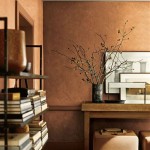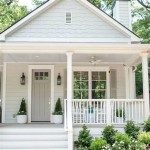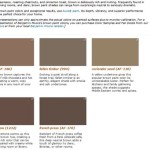Simple Outside House Painting Colour Combinations: A Visual Guide
The exterior paint color of a house plays a significant role in its curb appeal and overall aesthetic value. Choosing the right color combination can transform a house from ordinary to outstanding, reflecting the homeowner's personal style and complementing the surrounding environment. This article explores several simple yet effective outside house painting color combinations, providing visual examples and insights to guide homeowners in making informed decisions.
Selecting the right exterior paint color isn't solely about personal preference; it also involves considering factors such as the architectural style of the house, the climate, and the existing landscape. A color palette that works well in a sunny, coastal environment may not be as suitable for a colder, more wooded area. Furthermore, the colors should harmonize with permanent features such as roofing materials, brickwork, and stonework.
Neutral color schemes are often a safe and timeless choice for exterior house painting. They offer a versatile backdrop that can be easily accented with bolder colors on doors, shutters, and trim. However, exploring bolder or more unconventional color combinations can also yield stunning results, provided they are carefully considered and implemented.
Understanding Color Harmony and Contrast
Before diving into specific color combinations, it's crucial to understand the principles of color harmony and contrast. Color harmony refers to the pleasing arrangement of colors that creates a sense of visual balance and unity. Common color harmonies include complementary colors (colors opposite each other on the color wheel), analogous colors (colors next to each other on the color wheel), and triadic colors (three colors equally spaced on the color wheel).
Contrast, on the other hand, involves the use of colors that differ significantly in hue, saturation, or value. High contrast color schemes can create a bold and dramatic effect, while low contrast schemes offer a more subtle and understated look. The key is to strike a balance between harmony and contrast to achieve a visually appealing result.
When selecting colors, it's helpful to use color swatches and paint samples to visualize how the colors will look in different lighting conditions. The appearance of a color can change dramatically depending on the time of day and the amount of sunlight it receives. Painting a small area of the house with the chosen colors before committing to the entire project is highly recommended.
Classic Neutral Combinations
Neutral color combinations provide a foundation for creating an elegant and sophisticated exterior for any home. These palettes are versatile and work well with a variety of architectural styles, from traditional to modern. Examples include:
*White with Gray Trim:
This combination offers a clean and crisp look. White walls provide a bright and airy feel, while gray trim adds depth and definition. The gray can range from a light silver gray to a darker charcoal gray, depending on the desired level of contrast. *Beige with Cream Trim:
A warm and inviting combination that evokes a sense of comfort and serenity. Beige provides a neutral base, while cream trim adds a touch of elegance. This palette works particularly well with houses that have natural stone or brick accents. *Light Gray with White Trim:
A modern and sophisticated combination that is gaining popularity. Light gray walls offer a subtle alternative to white, while white trim provides a clean and crisp contrast. This palette is particularly well-suited for contemporary homes with clean lines. *Greige with Off-White Trim:
“Greige,” a blend of gray and beige, offers a warm neutral that can be paired with off-white trim for a subtle, sophisticated look. This combination works well with various textures such as wood siding and stone accents.These neutral schemes are highly adaptable and can be further customized with pops of color on the front door or shutters. A red door against a white or gray house, for instance, can add a touch of personality and visual interest. Similarly, dark shutters can enhance the architectural details of the house and create a sense of depth.
Bold and Vibrant Options
For homeowners who prefer a more daring and expressive exterior, bolder color combinations can be a rewarding choice. However, it's important to exercise caution and choose colors that are both visually appealing and harmonious with the surrounding environment. Consider these examples:
*Navy Blue with White Trim and Red Door:
A classic and patriotic combination that exudes confidence and charm. Navy blue walls provide a rich and sophisticated backdrop, while white trim adds a crisp and clean contrast. A red door serves as a focal point and adds a touch of personality. *Teal with Gray Trim:
Teal is a refreshing and vibrant color that can bring a touch of coastal flair to any home. Paired with gray trim, it creates a balanced and harmonious look. This combination is particularly well-suited for houses located near water or with a beachy aesthetic. *Sage Green with Cream Trim:
A nature-inspired combination that evokes a sense of tranquility and harmony. Sage green walls blend seamlessly with the surrounding landscape, while cream trim adds a touch of warmth and elegance. This palette is particularly well-suited for houses located in wooded areas or with a rustic charm. *Yellow with White Trim:
Yellow exudes warmth and energy, making it a cheerful choice for an exterior. Pairing it with white trim creates a bright and inviting look. It’s best to avoid very bright yellows and opt for softer, more muted tones. This combination can be particularly effective for cottages or smaller homes.When using bolder colors, it's often best to use them sparingly and balance them with neutral tones. For example, a brightly colored door can be paired with a more muted wall color to prevent the overall look from being overwhelming.
Earth Tones and Natural Palettes
Earth tones provide a timeless and natural look, connecting the house to its environment. These colors are often inspired by nature and create a sense of warmth and serenity. Examples include:
*Brown with Beige Trim:
A classic and understated combination that blends seamlessly with the natural landscape. Brown walls provide a grounding and earthy feel, while beige trim adds a touch of warmth. This palette is particularly well-suited for houses located in wooded areas or with a rustic aesthetic. *Olive Green with Tan Trim:
Olive green is a sophisticated and versatile color that evokes a sense of tranquility and harmony. Paired with tan trim, it creates a balanced and natural look. This combination is particularly well-suited for houses located in suburban or rural areas. *Terracotta with Cream Trim:
Terracotta is a warm and inviting color that evokes a sense of Mediterranean charm. Paired with cream trim, it creates a balanced and elegant look. This combination is particularly well-suited for houses with Spanish or Southwestern architectural styles. *Stone Gray with Wood Accents:
Mimicking the look of natural stone, this combination incorporates grays and other earthy tones with the warmth of natural wood. This provides a sophisticated, yet rustic appearance.Earth tones work well with natural materials such as wood, stone, and brick. Incorporating these materials into the exterior design can further enhance the natural and harmonious look of the house.
Considering Architectural Style
The architectural style of the house should also play a role in the selection of exterior paint colors. Certain color combinations are more suited to specific architectural styles than others. For example:
*Victorian Homes:
Victorian homes often feature elaborate details and ornate trim. These homes typically benefit from more complex color schemes that highlight the architectural features. Popular choices include combinations of creams, greens, and blues, often with contrasting trim colors. *Colonial Homes:
Colonial homes are characterized by their symmetrical facades and simple lines. These homes typically look best with classic and understated color schemes. Popular choices include white with black shutters, gray with white trim, and beige with cream trim. *Ranch Homes:
Ranch homes are typically single-story homes with a low-pitched roof. These homes can benefit from a variety of color schemes, depending on the surrounding landscape and the homeowner's personal style. Popular choices include earth tones, neutrals, and bolder colors that complement the horizontal lines of the house. *Modern Homes:
Modern homes often feature clean lines and minimalist details. These homes typically look best with simple and uncluttered color schemes. Popular choices include whites, grays, and blacks, often with contrasting accents.By carefully considering the architectural style of the house, homeowners can select a color combination that enhances its beauty and complements its inherent design.
The Impact of Landscaping and Surroundings
The surrounding landscape and environment should also be taken into account when choosing exterior paint colors. The color of the house should harmonize with the natural elements in the area, such as trees, shrubs, and flowers. For example:
*Wooded Areas:
Houses located in wooded areas often benefit from earth tones and natural colors that blend seamlessly with the surrounding landscape. Greens, browns, and beiges are all excellent choices. *Coastal Areas:
Houses located near the coast often look best with light and airy color schemes that reflect the bright and sunny environment. Whites, blues, and teals are all popular choices. *Desert Areas:
Houses located in desert areas often benefit from warm and earthy colors that complement the dry and arid landscape. Terracotta, sand, and beige are all excellent choices. *Urban Areas:
In urban settings, consider the surrounding buildings and streetscape. Colors that complement the existing architecture and brick tones of nearby buildings can create a cohesive look.By carefully considering the surrounding landscape and environment, homeowners can select a color combination that enhances the beauty of their property and creates a harmonious relationship with its surroundings.

15 Best Colour Combination For House Exterior

20 N Simple House Colour Combination Outside In 2024

Top 10 Best Outside Colour Combinations For N Homes

15 Best Colour Combination For House Exterior

Simple Green Outdoor Design

Top 400 House Painting Colours Outside 2024 Exterior Wall Paint Color Combinations Ideas P2

Exterior Colour For House Finding The Perfect Shade Just Got Easier

Latest House Painting Color Outside 2024 I Exterior Wall Paint Combination Ideas

Latest 100 House Painting Colours Outside 2024 Exterior Wall Paint With Color Combinations Ideas

68 Home Exterior Paint Color Ideas For A Fresh Look
Related Posts

